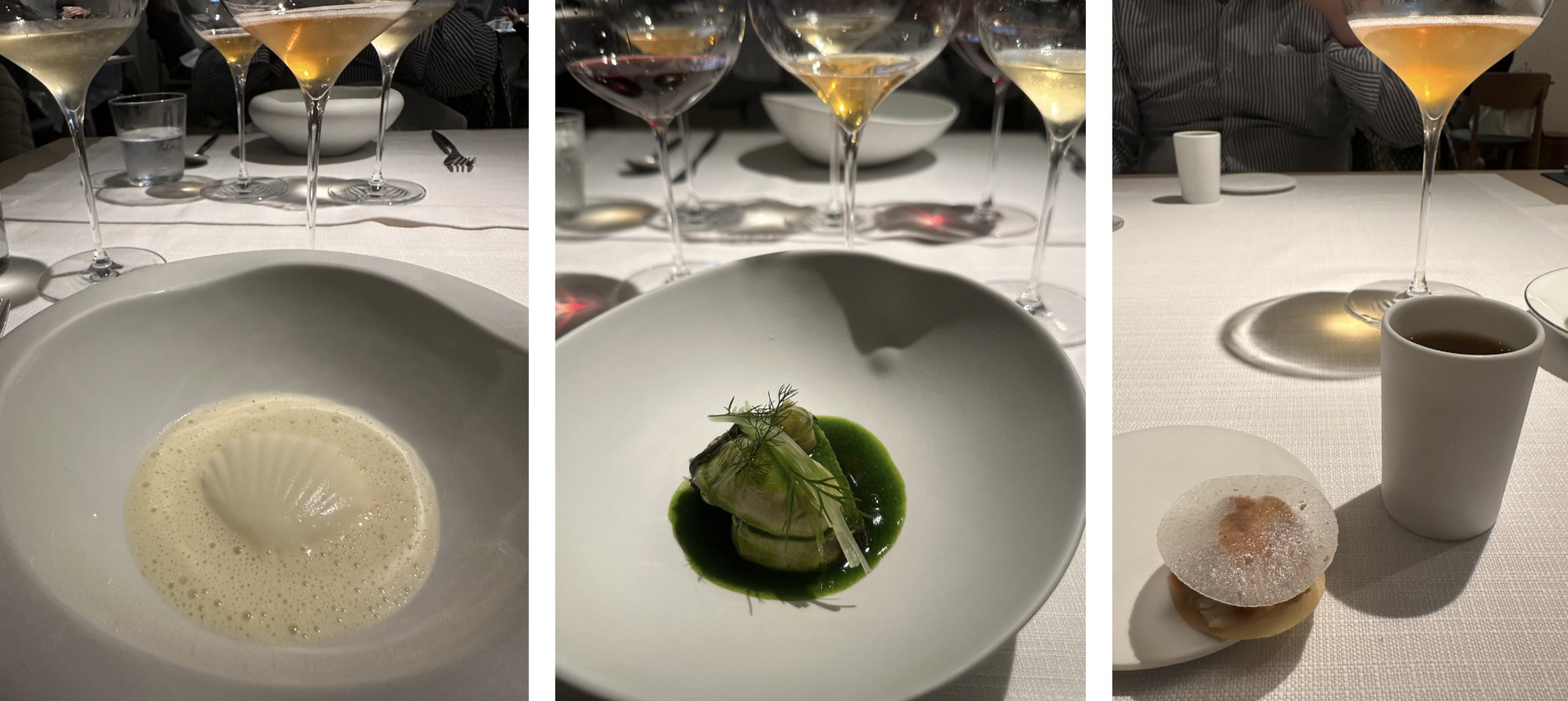
As tea pairing steadily makes its way into the Michelin dining scene, many top restaurants in Taiwan are embracing alcohol-free pairings that spotlight the island’s rich tea heritage. But here’s the question: do food and tea truly harmonize?
At newly minted one-star restaurant NOBUO, the philosophy is clear:
Simplicity. Purity. Honesty.
The chef uses humble ingredients as a springboard for bold, creative expression—and the scallop dish is a shining example.
Here, a single Hokkaido scallop takes center stage. It’s reimagined into a silky mousse, enriched with a cream consommé, and finished with a delicate cream broth. The result? A dish that celebrates the scallop’s pure oceanic sweetness in texture and flavor.
Now, does Sun Moon Lake native black tea really pair well with it, as the restaurant suggests? This Taiwanese black tea, known for its mild tannins and signature fermented aroma, is said to draw out “woody, floral notes and a lingering finish” when paired with scallop. But in practice, it tells a different story. The tannins actually firm up the scallop’s texture, stripping it of its softness and disrupting the balance with contrasting flavors.
Many chefs turn to tea with the right intention—to highlight and elevate flavors—but lack a deep understanding of tea’s properties. This leads to pairings that miss the mark.
So what would work better?
In my experience: a Taiwanese high mountain oolong. Brew it at 100°C for about 90 seconds, then allow it to cool to 60°C before sipping. Adjust concentration to taste. Drink it slowly, alternating sips of tea with bites of scallop—the tea’s smooth floral layers meld beautifully with the scallop’s sweet brininess. The pairing is clean, seamless, and deeply satisfying.
If NOBUO deepens its understanding of tea pairing, it won’t just refine its flavor journey—it might also bring itself one step closer to a second Michelin star.


